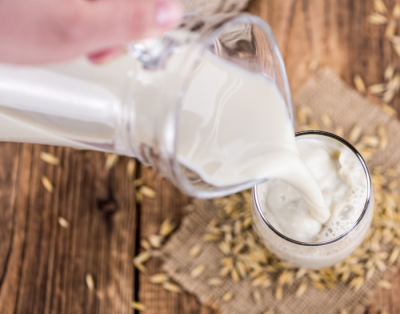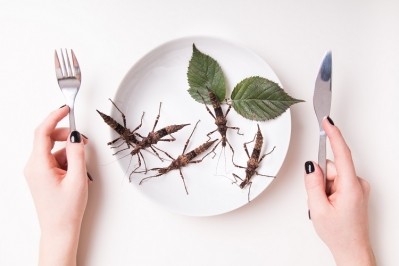Alt fat from insects: Exploring the circular economy potential of larvae fat for feed and food

The majority of dietary fat in human diets comes from animal products. Yet animal agriculture is responsible for 14.5% of all anthropogenic greenhouse gas emissions (GHGs), and therefore is often not considered the most sustainable option.
At the same time, humans are not consuming enough fat. Recent research out of Sweden calculates that average consumption of fats in many populous regions of the world is below nutritional recommendations.
Those same researchers estimate that in order for the global population to reach recommended levels of fat consumption, an additional 45m tonnes of dietary fat needs to be produced and consumed.
Given livestock, palm and soy production’s track record of deforestation, amongst other irresponsible and unethical practices, researchers are seeking alternative means to increase fat production and consumption, sustainably.
Circular economy potential
A separate group of researchers in Sweden, working out of the Swedish University of Agricultural Sciences in Uppsala, is approaching this issue through the lens of waste management.
Globally, organic waste accounts for around 3-5% of total anthropogenic GHG emissions due to food scraps being discarded in landfill. Yet in a truly circular economy, there should be no waste – including food waste.
“The side stream from one process should be used as a new process in another,” Cecilia Lalander, associate professor in environmental engineering at the university’s Department of Energy and Technology, explained at a recent TABLE event.
In Lalander’s native Sweden, this is not occurring. Sixty percent of the country’s food waste is incinerated, with surplus heat produced from the process used for district heating. Globally, the situation is much worse, Lalander stressed: “Most of the organic waste is going to landfill.”
The researchers believe they have found a potential solution that could increase sustainable fat production while reducing GHG emissions from discarded food waste. The solution, Lalander explained at the event, lies in insect fat.
Regulatory challenges
The researcher proposes that mixed food waste be fed to insects, and those insects be fed to animals for human consumption.
Perhaps the more obvious solution would be to feed the mixed food waste to animals directly. However, this practice is banned in Europe. “This is allowed in many parts of the world, but has not been allowed in Europe since the Mad Cow Disease of the 80s and 90s,” explained Lalander.
And in fact, insects too are classified as farmed animals. This means that under EU law, insects cannot be fed mixed food waste either.
But, as Lalander explained at the TABLE event – coordinated by the University of Oxford, the Swedish University of Agricultural Sciences, and Wageningen University and Research – by feeding mixed food waste to insects, then feeding those insects to animals, an extra ‘safety barrier’ is created prior to human consumption.
“We want to recycle the complex molecules, such as amino and fatty acids, but we don’t want to recycle [potential] disease-causing microorganisms. So we’re trying to…engineer a natural process whereby we rear fly larvae with food waste so that they can be used for animal production.”
Specifically, the project is focusing on black soldier fly larvae, which can grow from 1mg to 200mg within a fortnight. “They have a 200-fold increase in bodyweight during the two-week process.”
Could insects contain more fat than protein?
So exactly how efficient is black soldier fly larvae production when fed on food waste? According to the researchers’ calculations, one tonne of food waste can feed 250kg of fly larvae, which results in the equivalent of around 35kg of crude protein and 30kg of crude fat.
The fatty acid composition changes according to the type of food waste used to feed the larvae. The least amount of fat is produced from feeding the insects of mussels, followed by salmon, and mixed food waste.
The predominant fatty acid type was found to be saturated fatty acids, followed by monounsaturated fatty acids, with a smaller proportion of polyunsaturated fats.
The most fat was present in larvae fed on bread. “The fat content varies quite dramatically depending on what they have been reared on, and what is striking is that a very high carbohydrate diet will result in very fat larvae,” the researcher explained.
“These larvae can have fat content of up to around 50% on a dry matter basis,” said Lalander, suggesting that larvae can contain more fat than protein.
Of particular interest was that the largest portion of larvae fat was synthesised by the larvae, meaning that they produced it themselves – rather than sourced it from their feed.
From a sustainability perspective, using insects as a protein feed was found to have a higher environmental impact than many of the common feeds used today, such as chicken feed, fishmeal, and generic protein feed.
However, if insects were fed on mixed food waste, then insect feed would have a negative environmental impact, the researcher explained: “Meaning that it’s positive for the environment, so we really have to consider what we are feeding the insects.”
Insect fat for human consumption
Lalander suggested further research could investigate the environmental impact of insect rearing for fat production, rather than protein, as well as exploring potential animal health benefits from the consumption of insect fat.
Another pressing question is whether insect fat could be used directly for human consumption?
The researcher expressed concerns around consumer acceptance of insect products. “I think it’s a social acceptance issue,” we were told. Flavour, Lalander suggested, is another potential issue: “They are not super tasty.”
However, the insects could be further processed to become ‘more distant’ from its original form, as is currently done for some varieties of insect protein. But the fact remains, European legislation prohibits insects from being fed on mixed food waste, and therefore “currently, it’s very much a no-no”.
Whether such regulation may change in the future is unclear, but Lalander is hopeful. “We are [seeing] one exemption after another to this legislation, so yes I think it definitely will happen.”
Source: The Lancet Planetary Health
‘The role of fats in the transition to sustainable diets’
Published 8 September 2021
DOI: https://doi.org/10.1016/S2542-5196(21)00194-7
Authors: Bojana Bajželj, Federica Laguzzi. Elin Röös
Source: Waste Management
‘Fatty acid composition of black soldier fly larvae (hermetia illucens) – Possibilities and limitations for modification through diet
Published 23 October 2019
DOI: https://doi.org/10.1016/j.wasman.2019.10.014
Authors: Nils Ewald, Aleksandar Vidakovic, Markus Langeland, Anders Kiessling, Sabine Samples, Cecilia Lalander




























